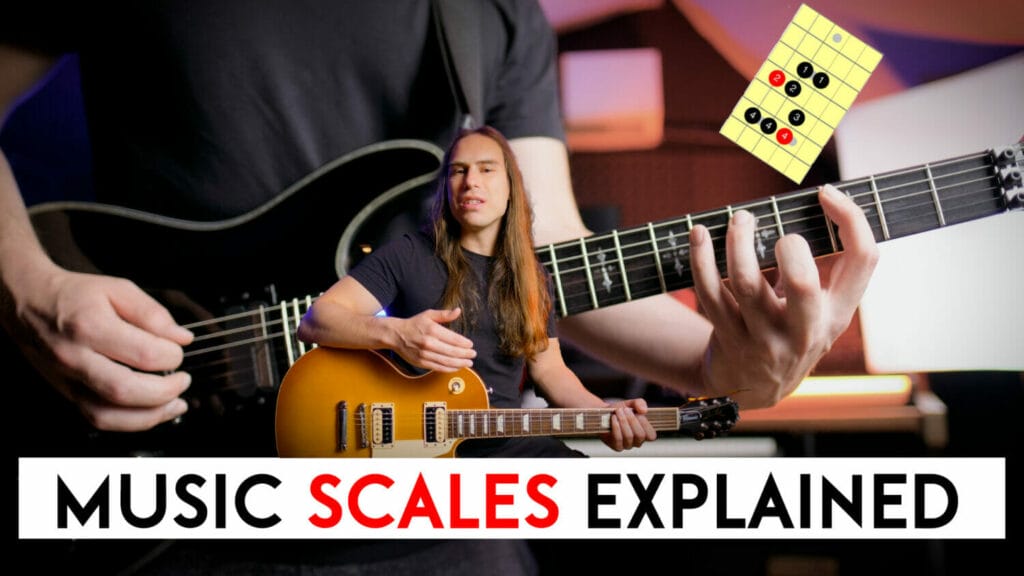
Music Scales Explained. How To Master Scales On The Guitar?
What Is A Scale? How To Learn Scales On The Guitar?
What is a scale? Scales are our greatest guide, our greatest weapon. Learning these shapes and digesting their vibes will improve your musical imagination and creativity. This will make you more confident on the instrument. After you learn and practice the scales, you will be able to play cleaner, more accurately and more comfortably. This will also improve your ear and improvisation skills.
What Is A Scale?
A scale is any set of musical notes ordered by fundamental frequency or pitch. The order of the intervals produce the vibe, the sound of the scale.
Lets take C – D – E – F – G – A – B – C (Do – Re – Mi – Fa – Sol – La – Ti – Do) notes for example. This is the simplest one; C Major scale.
To understand how this scale is formed, we need to talk about the intervals.
What Is An Interval?
An interval is a difference in pitch between two sounds.
If two notes on the guitar are consecutive on the fretboard, it is a semi-tone interval. If there is one fret skipped between two notes on the fretboard, it is called a whole-tone interval.
Natural notes except E to F and B to C are consecutive and have whole-tone intervals between them. Intervals between E -F & B – C are semi-tone.
What Is A Major Scale?
Let’s talk about the C Major scale.
Do – Re – Mi – Fa – Sol – La – Ti – Do.
Or the letters:
C – D – E – F – G – A – B – C
Note : Notice the letters are in alphabetic order starting from A(La).
A(la) – B(Ti) – C(do) – D(re) – E(mi) – F(fa) – G(sol)
Let’s formulate the scale using the intervals we talked about. Remember B – C & E – F are semi-tone intervals while the rest are whole tone intervals.
C ( whole tone ) – D ( whole tone ) – E ( semi tone ) – F ( whole tone ) – G ( whole tone ) – A ( whole tone ) – B ( semi tone ) – C
The order of the intervals mentioned above is the formula of the major scale. “2 Whole Tones, 1 Semi Tone, 3 Whole Tones, 1 Semi Tone” or 2W1S3W1S.
Major Scale Formlua
So, if we start from any note and apply “2 Whole Tones, 1 Semi Tone, 3 Whole Tones, 1 Semi Tone” formula, we get the major scale starting from that note. Let’s take D Major for example
D – E – F# – G – A – B – C# – D
Remember E and F have a semi-tone interval between them. But since the major scale formula needs the 2nd interval to be a whole-tone, we increase the pitch of F semi-tone by playing it F# instead. This will make E-F# interval a whole tone and also F# – G a semi-tone interval which is what the major scale formula needs.
Likewise, B – C is semi-tone, but since the major scale formula needs the 6th interval to be a whole-tone, we play a C# instead of a C.
Sum Up The Major Scale
To sum up, a major scale is “2 Whole Tones, 1 Semi Tone, 3 Whole Tones, 1 Semi Tone” interval order applied. This order has a certain vibe, a certain sound. So the major scale has a certain sound. You can think of the major scale as a bright, happy sounding scale, while the minor scale sounds more sad or depressed. (Of course there are exceptions). The interval order is the reason for the scales having certain vibes.
If you play C major or D, F or G# major, you will get the same vibe but in a different key, they sound the same and that sound is the result of the “2 Whole Tones, 1 Semi Tone, 3 Whole Tones, 1 Semi Tone” interval order.
Major Scale on the 6th String
We can play the same Major Shape on the sixth string. If you start from the note A – 5th fret of the 6th string, then you’ll play the A major shape.
What Is A Minor Scale
Like the major scale, the minor scale is formed of certain order of intervals.
The difference between the major and minor scales is that in the minor scale 3rd, 6th and 7th intervals are semi-tone lower than the major scale. Let’s talk about the C minor scale for example
C – D – Eb – F – G – Ab – Bb – C
The notes E, A and B ( 3rd – 6th – 7th notes ) are semi-tone lower instead of being natural like in the major scale.
The minor scale has a distinct sound of its own. It tends to sound sad, depressed and melancholic.
Minor Scale on the 5th String
Minor Scale on the 6th String
Other Scales
Major and minor scales are just the tip of an iceberg. There are a lot of different scales, modes, sounds & vibes out there. Some examples are :
- Pentatonic Scale
- Harmonic Minor and its modes
- Melodic Minor and its modes
- Ionian Mode
- Dorian Mode
- Phyrgian Mode
- Lydian Mode
- Mixolydian Mode
- Aeolion Mode
- Locrian Mode
Each scale and mode has a distinct vibe on its own. So, to improve your musical imagination, to play in different sounds and feelings, you’ll need to learn and master these scales and modes. While practicing the scales & modes, you’ll also improve your inner ear and learn which chords you can use for each scale. This will make you a better guitarist and a better musician. This knowledge will be one of your greatest weapons in your arsenal.
How To Learn Scales & Modes On The Guitar?
To learn the scales & modes on the guitar, you need a clear roadmap. Some of the shapes resemble each other, so you’ll need to learn slowly. I suggest learning a new scale each week and working on that scale through the week.
You’ll need to practice the shapes you learn and associate those shapes with their corresponding chords.
You can try to explore the relationship between the shapes, how you can connect them so you learn how you can make them sound different.
It’s a good idea to listen to the songs that use the scales & modes you’re working on. Those songs will develop your subconscious musical ideas.
If you want to learn and master scales, modes and arpeggios and combine them with advanced guitar techniques such as sweep picking, tapping, legato, hybrid picking and building speed Check out our Electric Guitar Mastery course
Would You Like To Learn Scales & Modes And Even More On The Electric Guitar?
You can learn different concepts and techniques in the massive Guitar Mastermind courses.
How Guitar Mastermind is different from others?
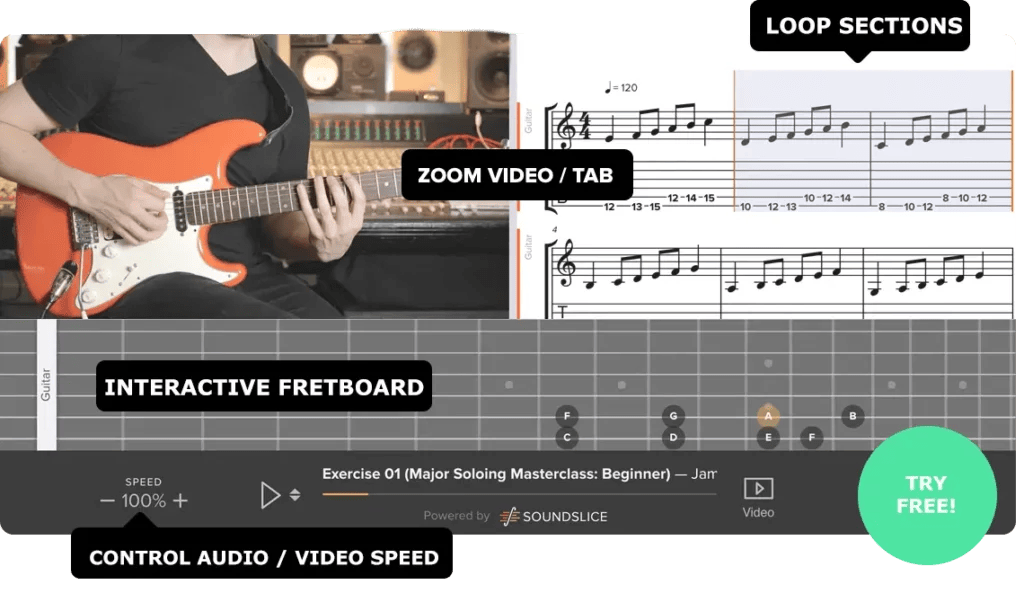
- Massive content. All courses are built with a solid structure and a huge library of information, lectures, example riffs, licks, melodies and solos.
- All the lessons are integrated with Interactive Tab / Notation system which works in all devices and can be made fullscreen. Check out an example lesson here.
- Lifetime access to content and all future updates.

30 DAY GUITAR PLAYER
Just picked up a guitar for the first time? We can help you with the most efficient way possible! Built with a solid structure, this course will teach you to play the guitar starting from absolute zero. You’ll learn techniques, musical concepts and different music styles. The course is fully TABBED and includes daily workouts, songs, riffs, licks, riffs, backing tracks and everything you need to become a solid guitar player! 82+ videos and 5+ hours of massive content!
GUITAR MASTERMIND METHOD
If you have already built a solid foundation on the electric guitar and you want to master the instrument, this course is for you. The curriculum has everything you need to unleash your potential on the guitar. You’ll learn scales, modes, exotic scales and their relationship with chords. This will improve your musical imagination, creativity and technical capability. Then you’ll combine this knowledge with advanced guitar techniques like sweep picking, legato, tapping and hybrid picking. The course is fully TABBED and includes daily workouts, songs, riffs, licks and backing tracks. 180+ videos and 8+ hours of massive content!
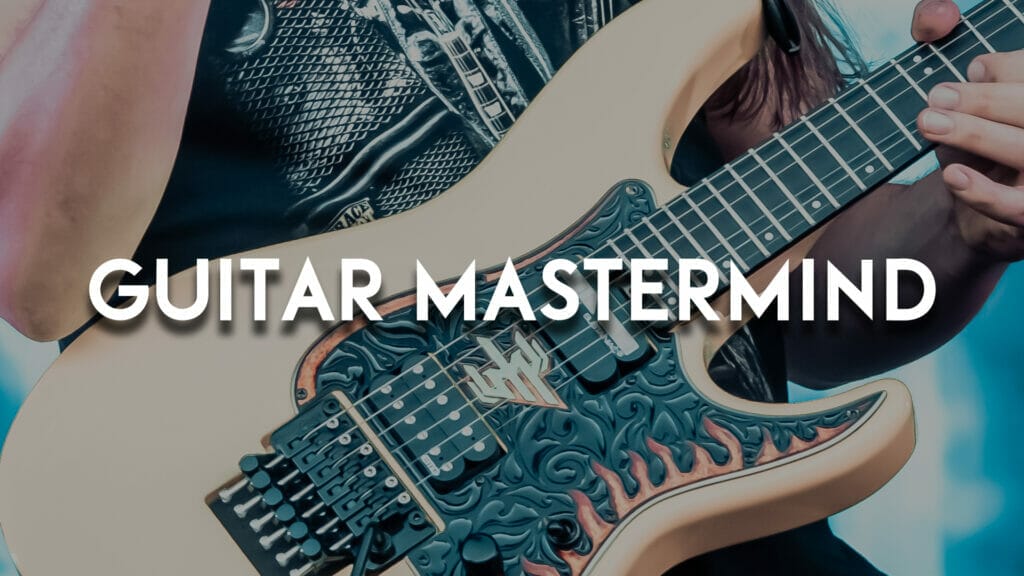
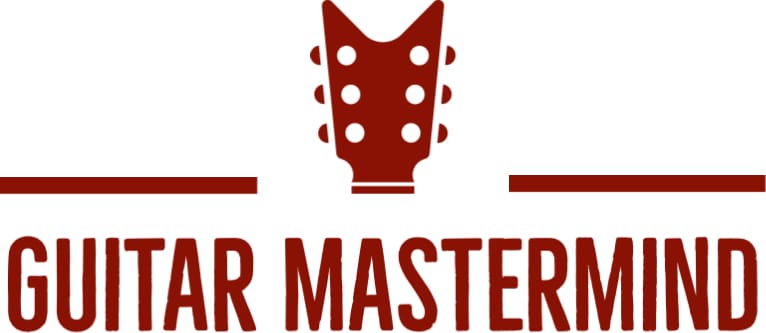



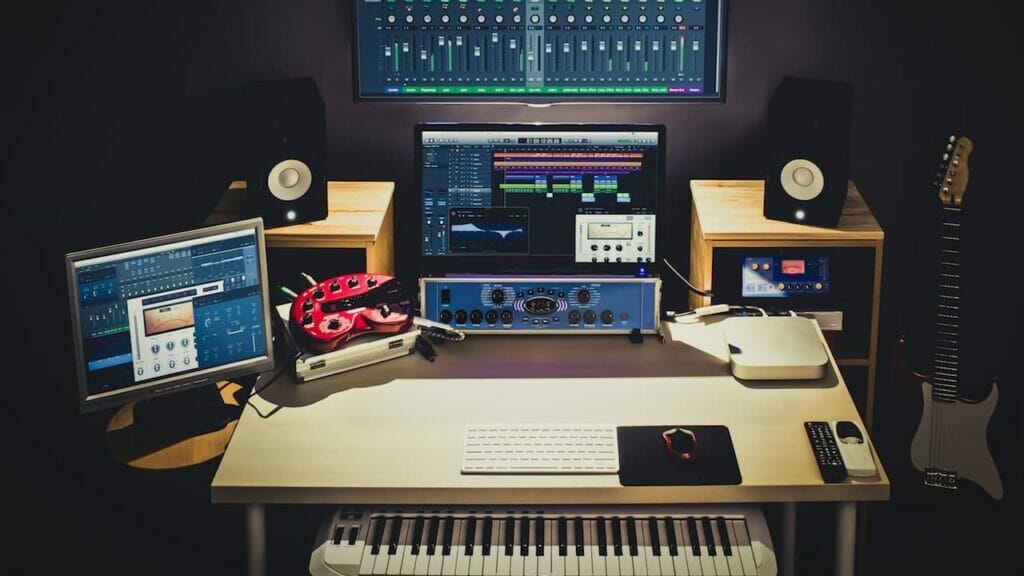



[…] 25 mg viagra cost […]
[…] clomid for women […]
[…] cialis 5 mg daily […]
[…] sildenafil 50 mg tablet […]
[…] sildenafil 75 mg […]
[…] ginseng root morning routine for men […]
itstitle
excerptsa
No perscription enclomiphene fedex delivery
discount enclomiphene generic good
generique kamagra pharmacie fournir medicaments
acheter kamagra en spain
discount androxal canada purchase
androxal usa price
purchase flexeril cyclobenzaprine cheap with prescription
how to order flexeril cyclobenzaprine generic drug
order dutasteride generic overnight shipping
how to order dutasteride retail price
discount gabapentin generic when will be available
ordering gabapentin price canada
purchase fildena generic alternatives
cheap fildena cheap canadian pharmacy
best price itraconazole
purchase itraconazole american express
buy staxyn purchase online canada
buy staxyn new york city
price of avodart
buy avodart generic uk next day delivery
price xifaxan
how to get free xifaxan samples
purchase rifaximin cheap usa
cheapest rifaximin without prescription
fedex kamagra přes noc
kanadská lékárna kamagra obecná
[…] high point pharmacy sildenafil $75 […]
[…] mexican viagra 100mg […]
[…] sildenafil 25 mg price […]
[…] cialis 10mg […]
[…] how to get cialis online […]
[…] sildenafil 100mg cost […]
[…] cialis soft […]
[…] difference between cialis and cialis professional […]